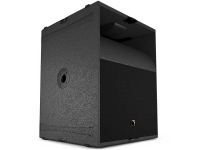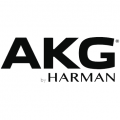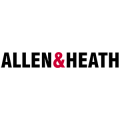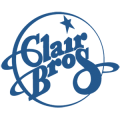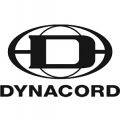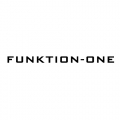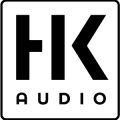ABOUT THE PRODUCT
ABOUT THE MANUFACTURER
GLOSSARY
VENUE S6L
The next stage in live sound
Mix and record live productions of any size with ease. Avid VENUE | S6L delivers the unmatched processing power and sound clarity artists and engineers rely on to present the best show possible. From direct AAX and Waves plugin support and 128 tracks of Pro Tools recording, to full system modularity and 300+ processing channels, the S6L unified platform gives you the mixing efficiency, creativity, and flexibility you need to meet the demands of any gig. And now with its newly expanded line of five control surfaces, three engines, and four I/O racks to choose from—with 100% hardware, software, and show file compatibility across all—it’s easy to configure and scale the perfect system for your needs.
Do more with a single solution
When it comes to mixing live sound, efficiency, sound clarity, and reliability are of critical importance. Avid VENUE | S6L is the industry’s only unified live sound platform that offers 100% software, hardware, and show file compatibility and interoperability across the entire line. It’s also the only system that offers direct Waves and AAX plugin control from the console to elevate mixes, and 128 tracks of built-in Pro Tools recording/playback with Virtual Soundcheck, saving hours of prep time. Plus, you get three years of 24x7 priority support to ensure the show always goes on.
Meet any live sound challenge
S6L delivers unrelenting performance and reliability through its advanced engine design and intelligent workflows to handle any live production. Its modularity and unmatched flexibility make it easy to scale a system with your choice of five control surfaces, three engines, and four I/O racks, plus the networking options you need—including Ethernet AVB, Dante, Milan, and MADI—to meet the demands of any live sound application, on almost any budget. You can even share I/O across up to three networked systems, providing more workflow possibilities while cutting costs.
Mix and record high-quality audio
With its premium-grade architecture, audio engine, and high-performance preamps, S6L delivers incredible clarity, warmth, and presence throughout the signal path. It provides the most integrated, cost-effective, and redundant Pro Tools recording workflow, eliminating the need for expensive audio interfaces. It also supports 2-track recording and playback from a USB flash drive. And it supports the same audio plugins and emulations of prized outboard gear used in countless recordings, so you can easily re-create the sound of the studio—live.
Pump up performances with massive power
From large concert tours and Broadway shows, to smaller club and corporate events, today’s stage productions are bigger and more complex than ever. That’s why we designed a groundbreaking engine for S6L—the VENUE | E6L—which combines two powerhouse technologies that work in concert together. With a state-of-the-art real-time processing engine and dedicated DSP plugin processing, you get unrivaled processing capabilities to handle an extraordinary number of channels—without the complication or stress.
E6L-192 mix engine is a processing powerhouse
Whether onstage or in a broadcast studio, live productions are more complex than ever, requiring truckloads of processing power to get the job done. The VENUE S6L`s 192 channel-capable E6L-192 mix engine is up to the task and provides plenty of juice to spare. The E6L-192`s state-of-the-art real-time processing engine handles all routing, channel, and mixing functions for maximum stability and power. And the HDX-powered DSP engine manages all AAX plug-in processing, with full automatic delay compensation. This allows you to create massive, great-sounding mixes with a plethora of processing channels and mix busses, all while experiencing tight, robust plug-in performance. And because all of the processing happens inside of the E6L-192, there are no round trips to external servers. This ensures amazingly low latency.
- Real-time processing engine handles mixing functions
- DSP engine manages AAX plug-in processing
- Full automatic delay compensation
- Amazingly low latency
Professional used lighting equipment.| Professional second hand lighting equipment.| Professional pre owned lighting equipment.
Professional used audio equipment.| Professional second hand audio equipment.| Professional pre owned audio equipment.
Second hand audio gear. | Second hand lighting.
Pro audio equipment, second hand amplifiers, DJ, second hand sound systems, second hand Microphones, second hand Media Players.
Outdoor & Indoor LED screens for sale, LED mobile truck.
Light trussing, Gebrauchte Veranstaltungstechnik, used stage equipment Stage & Theatre lighting products.
Used AVID
Avid Technology is an American technology and multimedia company founded in August 1987 by Bill Warner, based in Burlington, Massachusetts. It specialises in audio and video; specifically, digital non-linear editing (NLE) systems, video editing software, audio editing software, music notation software, management and distribution services.
Avid products are now used in the television and video industry to create television shows, feature films, and commercials. Media Composer, a professional non-linear editing system, is Avid`s flagship product.Avid was founded by Bill Warner—a marketing manager from Apollo Computer. A prototype of their first non-linear editing system—the Avid Media Composer—was shown at the National Association of Broadcasters (NAB) convention in April 1988. The Avid was based on an Apple Macintosh II computer, with special hardware and software of Avid`s own design installed. The Avid was "the biggest shake-up in editing since Melies played with time and sequences in the early 1900s".By the early 1990s, Avid products began to replace such tools as the Moviola, Steenbeck, and KEM flatbed editors, allowing editors to handle their film creations with greater ease. The first feature film edited using the Avid was Let`s Kill All the Lawyers in 1992, directed by Ron Senkowski. The film was edited at 30fps NTSC rate, then used Avid MediaMatch to generate a negative cutlist from the EDL.The first feature film edited natively at 24fps with what was to become the Avid Film Composer was Emerson Park. The first studio film to be edited at 24fps was Lost in Yonkers, directed by Martha Coolidge. By 1994 only three feature films used the new digital editing system. By 1995 dozens had switched to Avid, and it signaled the beginning of the end of cutting celluloid. In 1996 Walter Murch accepted the Academy Award for editing The English Patient (which also won best picture), which he cut on the Avid. This was the first Editing Oscar awarded to a digitally edited film (although the final print was still created with traditional negative cutting).
In 1994 Avid introduced Open Media Framework (OMF) as an open standard file format for sharing media and related metadata. In recent years the company has extended its business expertise through several acquisitions and internal investments towards the full palette of multimedia generation products including those to store and manage media files. In 2006 Avid launched new products such as Avid Interplay and Unity Isis. Avid used to be considered just a "video editing" company, but now has consolidated a well-rounded multimedia generation technology company.
Professional used lighting equipment.| Professional second hand lighting equipment.| Professional pre owned lighting equipment.
Professional used audio equipment.| Professional second hand audio equipment.| Professional pre owned audio equipment.
Second hand audio gear. | Second hand lighting.
Pro audio equipment, second hand amplifiers, DJ, second hand sound systems, second hand Microphones, second hand Media Players.
Outdoor & Indoor LED screens for sale, LED mobile truck.
Light trussing, Gebrauchte Veranstaltungstechnik, used stage equipment Stage & Theatre lighting products.
Active: Powered. An active crossover is electrically powered and divides the line-level signal prior to amplification. An active speaker includes an active crossover and built-in amplifier.
Actuality: Audio from an announcer speaking.
Amplifier: A component that increases the gain or level of an audio signal.
Balanced Input: A connection with three conductors: two identical signal conductors that are 180 degrees out of phase with each other, and one ground. This type of connection is very resistant to line noise.
Bandpass: A two-part filter that cuts both higher and lower frequencies around a center band. A bandpass enclosure cuts high frequencies by acoustic cancellation and low frequencies by natural physical limitations on bass response.
Bandwidth: In audio, the range of frequencies a device operates within. In video, the range of frequencies passed from the input to the output. Bandwidth can also refer to the transmission capacity of an electronic communications device or system the speed of data transfer,is very important when planning a meeting for the attendees to stay connected.
Bass: Low frequencies; those below approximately 200 Hz.
Bi-Wiring: A method of connecting an amplifier or receiver to a speaker in which separate wires are run between the amp and the woofer and the amp and the tweeter.
Boost: To increase, make louder or brighter; opposite of attenuate.
Bridging: Combining two channels of an amplifier to make one channel that more powerful. One channel amplifies the positive portion of an audio signal and the other channel amplifies the negative portion, which are then combined at the output.
CD: Compact Disc. Ubiquitous digital audio format. Uses 16-bit/44.1-kHz sampling rate PCM digital signal to encode roughly 74 or 80 minutes of two- channel, full-range audio onto a 5-inch disc.
CD-R: Recordable Compact Disc.
CD-RW: Rewritable Compact Disc.
Channel: In components and systems, a channel is a separate signal path. A four-channel amplifier has at least four separate inputs and four separate outputs.
Coloration: Any change in the character of sound (such as an overemphasis on certain tones) that reduces naturalness.
Crossover: A component that divides an audio signal into two or more ranges by frequency, sending, for example, low frequencies to one output and high frequencies to another. An active crossover is powered and divides the line-level audio signal prior to amplification. A passive crossover uses no external power supply and may be used either at line level or, more commonly, at speaker level to divide the signal after amplification and send the low frequencies to the woofer and the high frequencies to the tweeter.
Crossover Frequency: The frequency at which an audio signal is divided. 80 Hz is a typical subwoofer crossover point and is the recommended crossover point in theatrical and home THX systems. Frequencies below 80 Hz are sent to the subwoofer signals above 80 Hz are sent to the main speakers.
Cut: To reduce, lower; opposite of boost.
Decibel (dB): A logarithmic measurement unit that describes a sound`s relative loudness, though it can also be used to describe the relative difference between two power levels. A decibel is one tenth of a Bel. In sound, decibels generally measure a scale from 0 (the threshold of hearing) to 120-140 dB (the threshold of pain). A 3dB difference equates to a doubling of power. A 10dB difference is required to double the subjective volume. A 1dB difference over a broad frequency range is noticeable to most people, while a 0.2dB difference can affect the subjective impression of a sound.
Delay: The time difference between a sonic event and its perception at the listening position (sound traveling through space is delayed according to the distance it travels). People perceive spaciousness by the delay between the arrival of direct and reflected sound (larger spaces cause longer delays.
Diaphragm: The part of a dynamic loudspeaker attached to the voice coil that produces sound. It usually has the shape of a cone or dome.
Diffusion: In audio, the scattering of sound waves, reducing the sense of localization. In video, the scattering of light waves, reducing hot spotting, as in a diffusion screen.
Digital Audio Server: Essentially a hard drive, a digital audio server stores compressed audio files (like MP3 or WMA). Most include the processing to make the files, and all have the ability to play them back.
Direct-Stream Digital: A format for encoding high-resolution audio signals. It uses a 1-bit encoder with a sampling rate of 2,822,400 samples per second (verses 44,100 for CD). Used to encode six high-resolution channels on SACD.
Dispersion: The spread of sound over a wide area.
Distortion: Any undesired change in an audio signal between input and the output.
DNR: Dynamic Noise Reduction. A signal-processing circuit that attempts to reduce the level of high-frequency noise. Unlike Dolby NR, DNR doesn’t require preprocessing during recording.
Dolby B: A noise-reduction system that increases the level of high frequencies during recording and decreases them during playback.
Dolby C: An improvement on Dolby B that provides about twice as much noise reduction.
Dolby Digital: An encoding system that digitally compresses up to 5.1 discrete channels of audio (left front, center, right front, left surround, right surround, and LFE) into a single bitstream, which can be recorded onto a DVD, HDTV broadcast, or other form of digital media. When RF-modulated, it was included on some laser discs, which requires an RF-demodulator before the signal can be decoded. Five channels are full-range; the .1 channel is a band-limited LFE track. A Dolby Digital processor (found in most new receivers, preamps, and some DVD players) can decode this signal back into the 5.1 separate channels. Most films since 1992`s Batman Returns have been recorded in a 5.1 digital format, though a number of films before that had 6-channel analog tracks that have been remastered into 5.1.
Dolby EX: An enhancement to Dolby Digital that adds a surround back channel to 5.1 soundtracks. The sixth channel is matrixed from the left and right surround channels. Often referred to as 6.1. Sometimes referred to as 7.1 if the system uses two surround back speakers, even though both speakers reproduce the same signal. Software is backwards-compatible with 5.1 systems, but requires an EX or 6.1 processor to obtain additional benefit.
Dolby Pro Logic: An enhancement of the Dolby Surround decoding process. Pro Logic decoders derive left, center, right, and a mono surround channel from two-channel Dolby Surround encoded material via matrix techniques.
Dolby Pro Logic II: An enhanced version of Pro Logic. Adds improved decoding for two-channel, non-encoded soundtracks and music.
Driver: A speaker without an enclosure; also refers to the active element of a speaker system that creates compressions and rarefactions in the air.
DSP: Digital Signal Processing. Manipulating an audio signal digitally to create various possible effects at the output. Often refers to artificially generated surround effects derived from and applied to two-channel sources.
DTS: Digital Theater Systems. A digital sound recording format, originally developed for theatrical film soundtracks, starting with Jurassic Park. Records 5.1 discrete channels of audio onto a handful of laser discs, CDs, and DVDs. Requires a player with DTS output connected to a DTS processor.
DTS ES: An enhanced version of the 5.1 DTS system. Like Dolby’s Surround EX, a sixth channel is added. In some cases (DTS ES Discrete), the sixth channel is discrete. Software is backwards-compatible with 5.1 systems, but requires an ES or 6.1 processor to obtain additional benefit. Neo: 6 is a subset of DTS ES that creates 6.1 from material with fewer original channels.
Dynamic Range: The difference between the lowest and the highest levels; in audio, it’s often expressed in decibels. In video, it’s listed as the contrast ratio.
Professional used lighting equipment.| Professional second hand lighting equipment.| Professional pre owned lighting equipment.
Professional used audio equipment.| Professional second hand audio equipment.| Professional pre owned audio equipment.
Second hand audio gear. | Second hand lighting.
Pro audio equipment, second hand amplifiers, DJ, second hand sound systems, second hand Microphones, second hand Media Players.
Outdoor & Indoor LED screens for sale, LED mobile truck.
Light trussing, Gebrauchte Veranstaltungstechnik, used stage equipment Stage & Theatre lighting products.

